Best Technical Analysis Tools to Buy in November 2025

Technical Analysis: Power Tools For The Active Investors


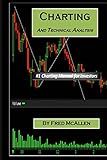
Charting and Technical Analysis
- UNCOVER MARKET TRENDS WITH ADVANCED CHARTING TOOLS.
- MAKE INFORMED TRADES WITH EXPERT TECHNICAL ANALYSIS INSIGHTS.
- ELEVATE YOUR INVESTING STRATEGY THROUGH COMPREHENSIVE ANALYSIS.


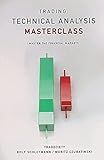
Trading: Technical Analysis Masterclass: Master the financial markets
- MASTER TRADING WITH EXPERT TECHNICAL ANALYSIS STRATEGIES.
- HIGH-QUALITY MATERIAL ENSURES A DURABLE, ENGAGING READING EXPERIENCE.
- UNLOCK FINANCIAL MARKET SECRETS FOR CONSISTENT TRADING SUCCESS.


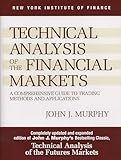
Technical Analysis of the Financial Markets: A Comprehensive Guide to Trading Methods and Applications
- AFFORDABLE PRICES: QUALITY READS WITHOUT BREAKING THE BANK.
- ECO-FRIENDLY CHOICE: PROMOTE SUSTAINABILITY BY BUYING USED BOOKS.
- UNIQUE FINDS: DISCOVER RARE TITLES AND HIDDEN GEMS EASILY!



Essential Technical Analysis: Tools and Techniques to Spot Market Trends


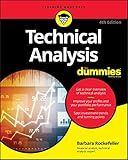
Technical Analysis For Dummies


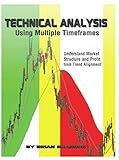
Technical Analysis Using Multiple Timeframes



The Handbook of Technical Analysis + Test Bank: The Practitioner's Comprehensive Guide to Technical Analysis (Wiley Trading)


The Triple Exponential Average (TRIX) is a technical analysis indicator that measures the rate of change and smoothens out price data. It was developed by Jack Hutson in the 1980s and aims to identify trends, reversals, and generate buy/sell signals.
TRIX is calculated using triple smoothing of the price data. It starts by calculating a single Exponential Moving Average (EMA) of the closing prices over a given period. This first EMA is then smoothed further to generate a second EMA, and this second EMA is smoothed again to calculate the TRIX line, which is the final result.
The TRIX line reflects the rate of change in the averaged price data. It is designed to filter out market noise and make the underlying trend more visible. The resulting TRIX line oscillates around a zero line, with positive values indicating an uptrend and negative values indicating a downtrend. TRIX crossovers above or below the zero line can signal potential trend reversals.
To generate trade signals, a Signal Line is often applied to the TRIX line. The Signal Line is typically a simple moving average of the TRIX line itself. When the TRIX line crosses above the Signal Line, it generates a buy signal, indicating a bullish trend. Conversely, when the TRIX line crosses below the Signal Line, it generates a sell signal, indicating a bearish trend.
TRIX can also be used to identify overbought and oversold conditions. When the TRIX line reaches high positive values, it suggests an overbought market, indicating a potential reversal or correction in price. On the other hand, when the TRIX line drops to low negative values, it indicates an oversold market, suggesting a potential price recovery.
Traders and analysts use TRIX in conjunction with other technical indicators and chart patterns to confirm signals and make more informed trading decisions. It is important to consider other factors and conduct thorough analysis before relying solely on TRIX signals or making trading decisions based on this indicator alone.
How to scan a list of stocks using the Triple Exponential Average (TRIX) for potential trading opportunities?
To scan a list of stocks using the Triple Exponential Average (TRIX) for potential trading opportunities, you can follow these steps:
- Prepare a list of stocks you want to scan for potential opportunities.
- Obtain historical price data for these stocks, preferably including at least several months or years of data.
- Calculate the TRIX indicator for each stock in the list using the following steps: Calculate the Exponential Moving Average (EMA) for the stock's closing prices with a specific period, for example, 14 days. Calculate a second EMA for the previously calculated EMA with the same period. Calculate a third EMA for the second EMA with the same period. Calculate the TRIX by taking the percentage difference between the third EMA and the previous day's third EMA.
- Set a threshold value for the TRIX indicator that determines potential trading opportunities. For example, you may consider any positive crossover above zero as a bullish signal and any negative crossover below zero as a bearish signal.
- Scan the TRIX values for each stock in your list and identify stocks that meet your threshold criteria for potential trading opportunities.
- Verify the potential opportunities by analyzing other technical indicators and confirming with fundamental analysis if necessary.
- Monitor the selected stocks closely and consider implementing appropriate trading strategies, such as buying or selling, based on the TRIX signals and other supporting indicators.
Remember, the TRIX indicator is just one tool among many to identify potential trading opportunities, and it is always essential to consider other factors before making any trading decisions. Additionally, backtesting and practice on historical data can help refine your scan criteria and improve the effectiveness of your trading strategy.
What is the historical significance of the Triple Exponential Average (TRIX) in financial markets?
The Triple Exponential Average (TRIX) is a technical indicator that was developed by Jack Hutson in the 1980s. While it may not have the same level of historical significance as some other technical indicators, TRIX has still played a role in financial markets. Here are a few points to consider:
- Trend identification: TRIX is primarily used to identify trends in financial markets. It attempts to filter out market noise and highlight the underlying trend, whether it is bullish or bearish. Traders and investors use this information to make more informed decisions about their trades and investments.
- Momentum indication: TRIX can also provide insight into momentum. By analyzing the rate of change of the indicator, traders can determine if momentum is increasing or decreasing. This information can be valuable in assessing the strength of a trend and making decisions accordingly.
- Divergence detection: TRIX is often used alongside other technical indicators to detect divergences. Divergence occurs when the price of an asset moves in the opposite direction of the indicator. Traders interpret this as a potential reversal signal, helping them to time their trades and enter or exit positions.
While TRIX may not have a specific historical event or breakthrough associated with it, it has become a popular tool among technical analysts and traders. Its use in trend identification, momentum analysis, and divergence detection has contributed to its relevance in financial markets.
How to combine the Triple Exponential Average (TRIX) with other technical indicators?
Combining the Triple Exponential Average (TRIX) with other technical indicators can provide a more comprehensive and reliable analysis of market conditions. Here are a few ways to combine TRIX with other indicators:
- Moving Average Convergence Divergence (MACD): TRIX and MACD are both trend-following indicators. To combine them, traders often use TRIX as a confirmatory tool for MACD signals. When the TRIX line crosses above its signal line and the MACD is also showing a bullish crossover, it can indicate a stronger buying signal. Conversely, if TRIX crosses below its signal line and the MACD shows a bearish crossover, it may strengthen the selling signal.
- Relative Strength Index (RSI): TRIX provides insight into the momentum of a trend, while RSI measures the overbought or oversold conditions in an asset. Combining these indicators can help identify potential reversal points. For instance, if TRIX shows a bullish trend while RSI is in the overbought zone (above 70), it may indicate a potential pullback or reversal in price.
- Moving Averages: Combining TRIX with different moving averages can help traders gain a clearer perspective on the market trend. For example, if TRIX is above its 20-day moving average and the 20-day moving average is above the 50-day moving average, it suggests a bullish trend. Conversely, if TRIX is below its 20-day moving average and the 20-day moving average is below the 50-day moving average, it suggests a bearish trend.
- Support and Resistance Levels: TRIX can be used in conjunction with support and resistance levels to determine potential entry and exit points. If TRIX breaks above a significant resistance level and confirms the breakout using other indicators, it may signal a buying opportunity. On the other hand, if TRIX falls below a strong support level and is corroborated by other indicators, it could indicate a selling opportunity.
Remember, no single indicator can provide perfect predictions, so it's essential to use a combination of indicators to confirm signals and increase the accuracy of your trading decisions. Experiment and test different combinations to find what works best for your specific trading strategy.
What is the mathematical formula for calculating the Triple Exponential Average (TRIX)?
The mathematical formula for calculating the Triple Exponential Average (TRIX) is as follows:
TRIX = EMA(EMA(EMA(data, period), period), period) / EMA(EMA(EMA(data, period), period), period - 1)
Where:
- EMA is the Exponential Moving Average
- data is the input series of data points
- period is the number of periods used in the calculation (typically a positive integer)
The TRIX is derived by taking the triple exponential moving average of the input data. Firstly, the EMA is calculated for the data with a given period. This result is then used to calculate another EMA with the same period. Finally, a third EMA is calculated with the same period. The TRIX is obtained by dividing the third EMA by the second-to-last EMA.
Note: EMA can be calculated using various formulas, such as the Exponential Smoothing Formula, depending on the context and preferences.
How to calculate the rate of change of the Triple Exponential Average (TRIX)?
To calculate the rate of change of the Triple Exponential Average (TRIX), follow these steps:
- Calculate the single Exponential Moving Average (EMA) of the price data. This can be done by using the formula: EMA = (Current Price - Previous EMA) * multiplier + Previous EMA Where the multiplier is calculated as 2 / (n + 1), and n is the period length.
- Calculate the double EMA by repeating the EMA calculation using the EMA values from the first step.
- Calculate the triple EMA by repeating the EMA calculation using the EMA values from the second step.
- Calculate the rate of change of the TRIX by using the formula: TRIX Rate of Change = (Current TRIX - Previous TRIX) / Previous TRIX
Note: TRIX is a trend-following indicator that is derived from the triple EMA. The rate of change of TRIX measures the percentage change in TRIX from the previous period.
It's important to note that TRIX is commonly used as part of a larger trading system and is often interpreted alongside other indicators and analysis techniques.
How to implement the Triple Exponential Average (TRIX) indicator on a trading platform?
To implement the Triple Exponential Average (TRIX) indicator on a trading platform, you will need to follow these steps:
- Obtain the necessary price data: The TRIX indicator typically requires a time series of price data, such as historical closing prices. Make sure you have access to this data on your trading platform.
- Calculate the Exponential Moving Average (EMA): TRIX is derived from the EMA, so you need to compute the EMA of the price data. You will need to choose a period for the EMA, such as 14 days. There are formulas available to calculate the EMA, and you can usually find it in the technical analysis library of your trading platform.
- Calculate the Rate of Change (ROC): The ROC is calculated by taking the percentage change in the EMA from one period to another. The formula for ROC is usually [(EMAcurrent - EMAprevious) / EMAprevious] * 100. Again, your trading platform's technical analysis library should have a function to calculate this.
- Apply the Triple Exponential Moving Average (TRIX) formula: TRIX is calculated based on the EMA of the ROC values. To calculate the TRIX, you need to apply the EMA formula to the ROC values. Typically, TRIX is calculated with a period of 9 days. Repeat the EMA calculation on the ROC values with a 9-day EMA period to obtain the TRIX value.
- Plot the TRIX values: Once you have calculated the TRIX values, you can plot them on a chart or use them for further analysis. Most trading platforms provide charting tools to plot technical indicators like TRIX.
By following these steps, you should be able to implement the TRIX indicator on your trading platform. However, it's important to note that the exact implementation may vary depending on the specific trading platform or programming language you are using. Always refer to the platform's documentation or seek support if needed.
